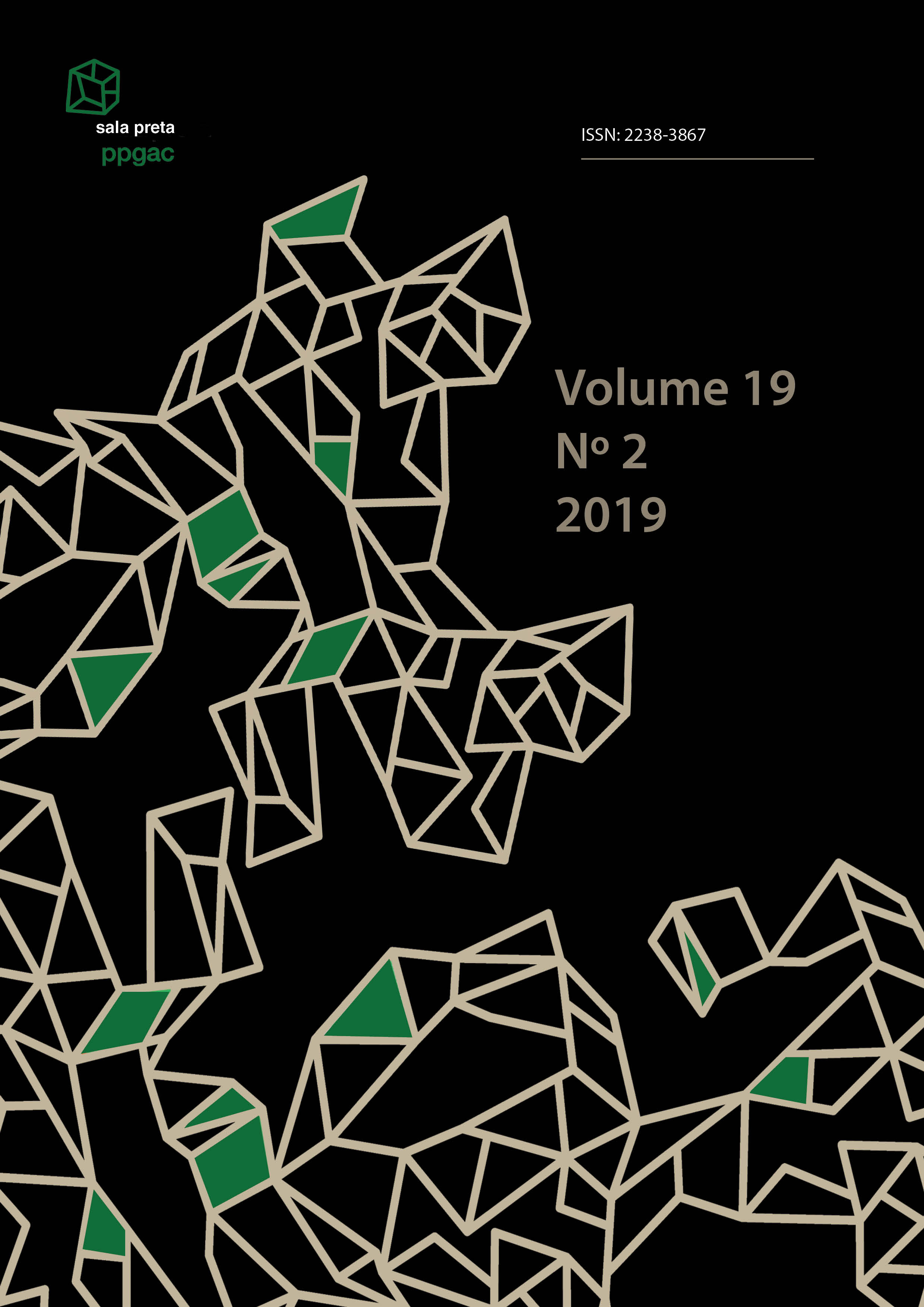The liminality of the pedagogical practices of the scene
visual devices of performance art and the defense of democratic education
DOI:
https://doi.org/10.11606/issn.2238-3867.v19i2p179-196Keywords:
Scene visualities, Performance arts, Liminality, Democratic education, Scenic pedagogyAbstract
What is the potential of the scene boundaries in exposing the political characteristics prevailing in the educational system of a country? What visualities of the scene are communicated in contemporaneity? How does the censorship of the transgender theater scene in 21st century Brazil affect the norms of an anti-democratic State pedagogy? What could be the role of performance arts in defending democratic education? This article analyzes the struggle for human rights in the field of Education developed by observing the recent processes of theatrical pedagogy and performance arts. Based on the study by Boal (2009), in which aesthetics is qualified as a human right, we verify the democratic ways that could foster pedagogical practices in the scene within the liminality attributes of performance arts. For such, we use the concept of liminality which is derived from social anthropology (TURNER, 1974), and indicate how its approximation to the Arts field by Caballero (2011) promoted its expansion and subtlety by emphasizing that the temporary nature of the scenic phenomenon liquefies political tensions through a boundaries pedagogy. We note three propositions of scene liminality: eccentricity, the ethics of votive corality and situated thought. The aim is to understand how such visual devices are central to attack and resistance in the context of the defense of democratic education.
Downloads
References
BOAL, A. A estética do oprimido. Rio de Janeiro: Garamond, 2009.
BOURRIAUD, N. Estética relacional. Tradução de Denise Bottmann. São Paulo: Martins Fontes, 2009.
CABALLERO, I. D. Cenários liminares: teatralidades, performances e política. Tradução de Luis Alberto Alonso e Angela Reis. Uberlândia: EDUFU, 2011.
CABALLERO, I. D. Desmontagem cênica. Rascunhos – Caminhos da Pesquisa em Artes Cênicas, Uberlândia, v. 1, n. 1, p. 5-12. jan-jun 2014.
COSTA, F. S. da. A poética do ser e não ser: procedimentos dramatúrgicos do teatro de animação. São Paulo: Edusp, 2016.
GUMBRECHT, H. U. Produção de presença: o que o sentido não consegue transmitir. Rio de Janeiro: Contraponto: EdPUC-Rio, 2010.
LARROSA, J. Pedagogia profana: danças, piruetas e mascaradas. Tradução de Alfredo Veiga-Neto. Belo Horizonte: Autêntica, 2016.
LEAL, D. Performatividade transgênera: equações poéticas de reconhecimento recíproco na recepção teatral. Tese (Doutorado em Psicologia Social) – Instituto de Psicologia, Universidade de São Paulo, São Paulo, 2018.
PAVIS, P. Dicionário da performance e do teatro contemporâneo. Tradução de Jacó Guinsburg, Marcio Honório de Godoy e Adriano C. A e Sousa. São Paulo: Perspectiva, 2017.
TURNER, V. O processo ritual: estrutura e anti-estrutura. Tradução de Nancy Campi de Castro. Petrópolis: Vozes, 1974.
Downloads
Published
Issue
Section
License
Os leitores são livres para compartilhar, copiar e redistribuir os textos publicados na Sala Preta, sem fins comerciais e em qualquer suporte ou formato, desde que sejam dados os créditos apropriados ao(s) autor(es) e à Revista. Podem também adaptar, remixar, transformar e criar a partir deste material, desde que distribuam o material derivado sob a mesma licença do original – e mantenham a menção explícita ao(s) autores e à Revista Sala Preta.
Ao submeter um artigo à Sala Preta e tê-lo aprovado para publicação os autores concordam com os termos da Licença Creative Commons Atribuição-NãoComercial-CompartilhaIgual 4.0 Internacional.


